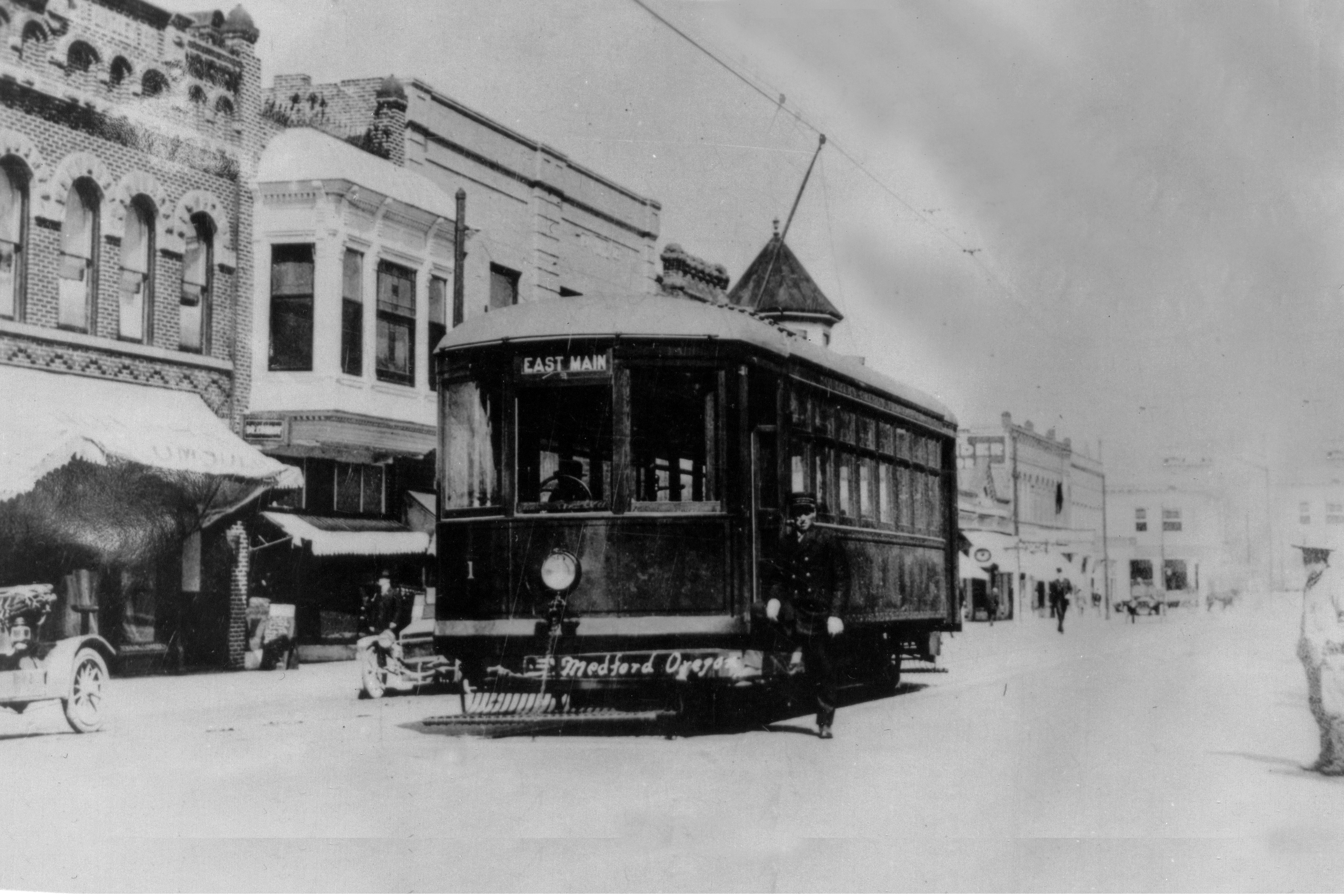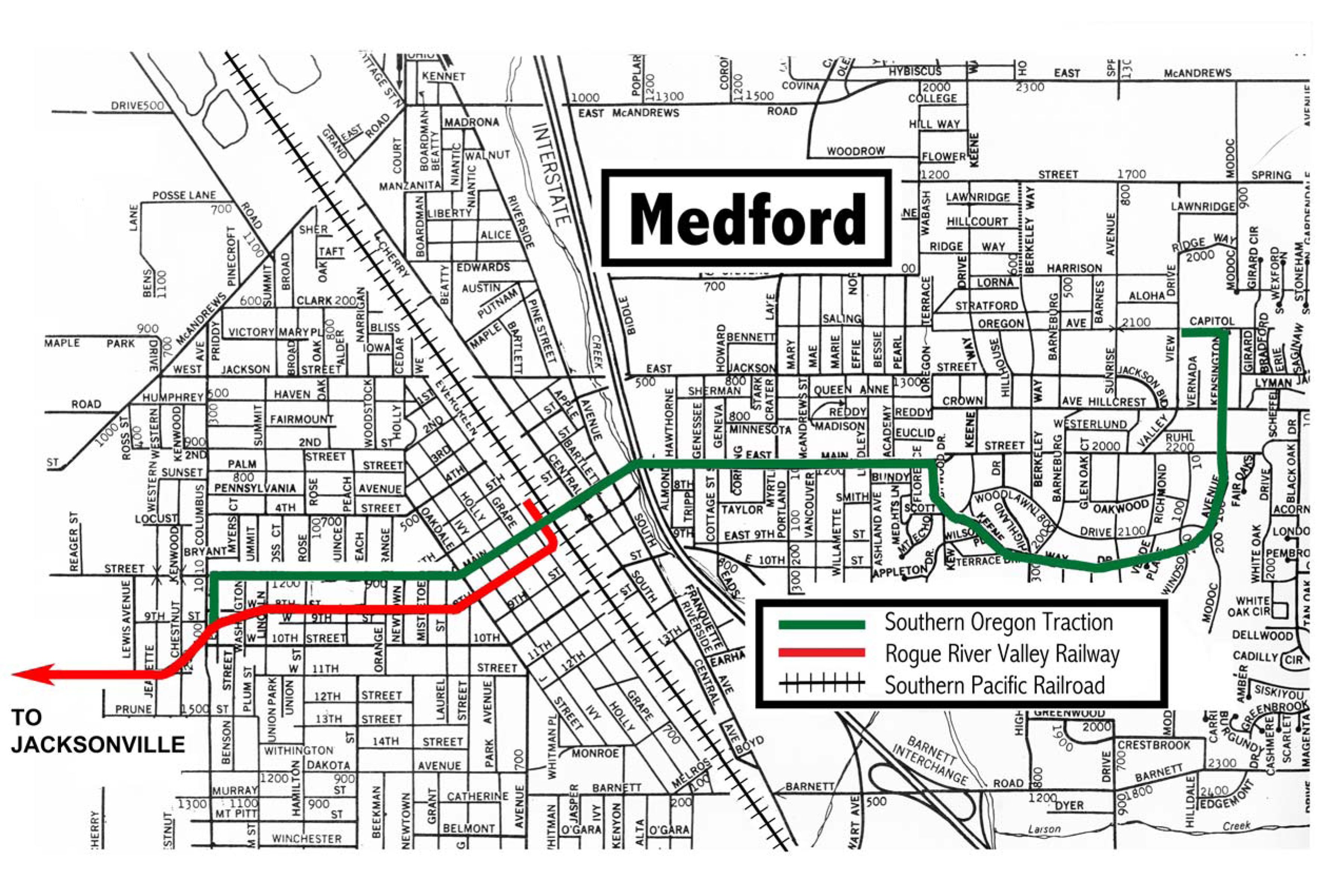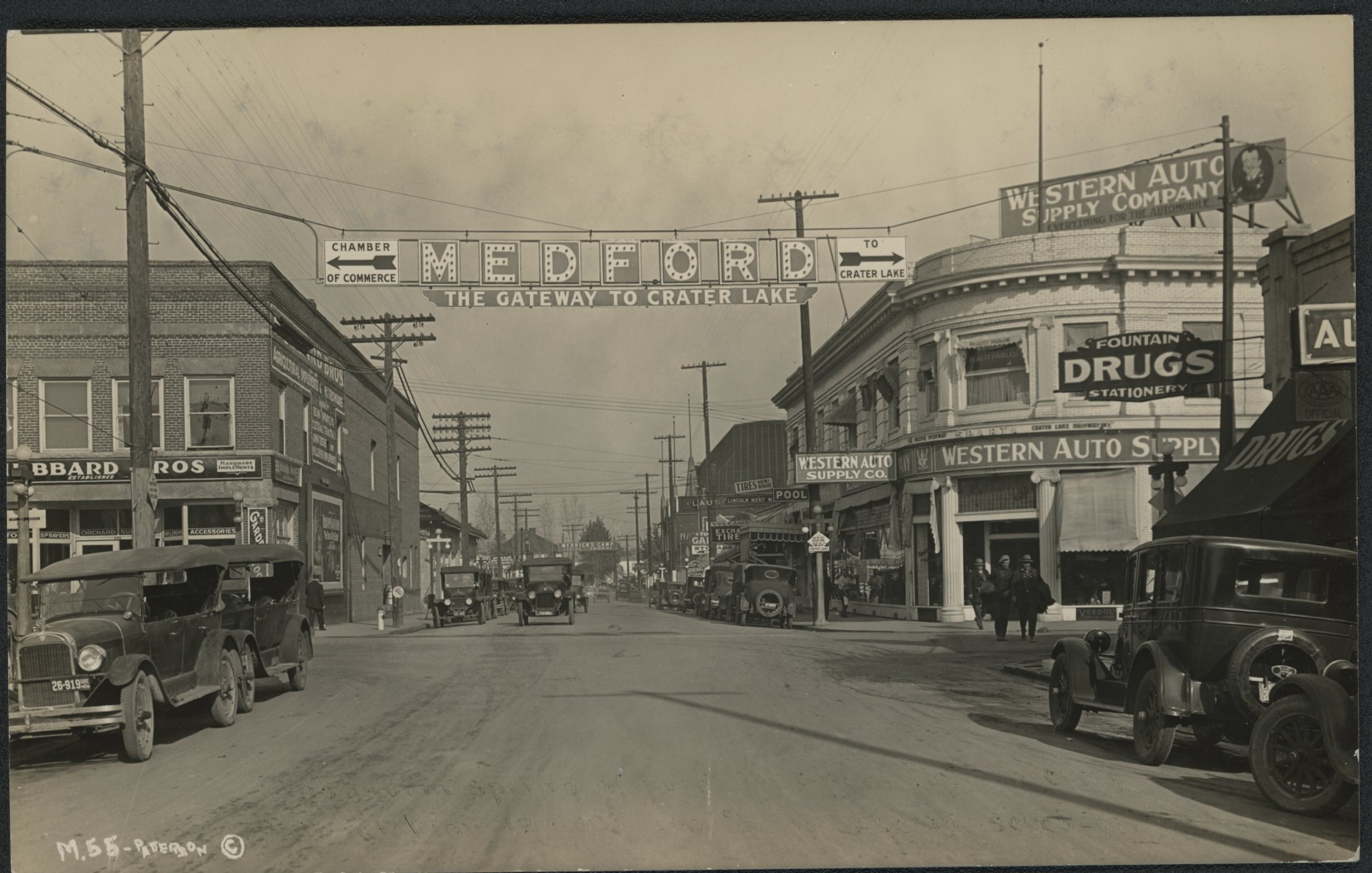Spencer S. Bullis organized the Southern Oregon Traction Company (SOTC) on July 15, 1913, to operate streetcars in the city of Medford. Three years later, the SOTC incorporated the Rogue River Valley Railway's (RRVR) line (founded in 1891) between Medford and Jacksonville. Though even the expanded SOTC did not achieve the same status as the larger streetcar systems in the Willamette Valley, it was an important regional transit option until 1920.
The SOTC's first trolley, a single-truck manufactured by the St. Louis Car Companry, arrived on March 16, 1914. Tracks ran east on Main Street from the Southern Pacific Railroad (SP) mainline to Eastwood Drive. After a crossing of the SP tracks was completed, the line was extended west through downtown to a terminus at Oakdale Avenue. A line was also built eastward to Siskiyou Heights, but it was removed when that development proved slow, and its rails were used to extend the Main Street tracks to a connection with the RVRR at Eighth and Elm Streets. A planned line to Ashland was never built.
In 1915, Bullis obtained control of the RVRR, which ran six miles between Medford and Jacksonville. It was electrified and merged with the two-and-a-half-mile SOTC system in January 1916. Both systems used standard-gauge track (4' 8 1/2" wide).
The Rogue River Valley Railway, which began operations on February 12, 1891, started as a steam short line. For most of its life, both before and after Bullis, the RRVR was operated by William S. Barnum. Barnum had pioneered modern passenger service with the RVRR by introducing an eight-passenger Fairbanks auto car in 1905. He had followed this in 1909 with a twenty-eight-seat Black Crow, gasoline-engine-powered, combination freight and passenger car designed by his son, William Henry Barnum.
On January 1, 1916 trolley service was introduced on a newly electrified Jacksonville-Medford line. The SOTC improved passenger comfort by adding a second Birney streetcar and a large double-truck car bought from the Cleveland, Ohio, system.
The 1920s would mark the end of electric railways in Southern Oregon. In 1920, two years after bankruptcy returned control to Barnum, SOTC passenger service was abandoned. A subsequent 1922 substation fire ensured that Medford’s streetcars would not be restored to operation, nor would the interurban line to Jacksonville, which had proven too short to generate a profit.
-
![In spite of the roll sign displaying "East Main" Southern Oregon Traction Company car No. 1 is westbound on West Main Street in downtown Medford, c. 1915.]()
SOTCO No. 1 West Main Line Medford, c.1915.
In spite of the roll sign displaying "East Main" Southern Oregon Traction Company car No. 1 is westbound on West Main Street in downtown Medford, c. 1915. Courtesy Richard Thompson
-
![Southern Oregon Traction Company map, 1914-1920.]()
Southern Oregon Traction Co map.
Southern Oregon Traction Company map, 1914-1920. Courtesy of and modified from an original by Bert Webber
-
![Rogue River Valley "doodle bug" Fairbanks auto car No 1, Jacksonville station.]()
RRVR Auto Car at Jacksonville.
Rogue River Valley "doodle bug" Fairbanks auto car No 1, Jacksonville station. Courtesy Southern Oreg. Hist. Soc.
-
![Rogue River Valley Railway gasoline motor car No. 2, Medford station.]()
RRVR Motor No 2 at Medford.
Rogue River Valley Railway gasoline motor car No. 2, Medford station. Courtesy Ed Culp
Related Entries
Further Reading
Hilton, George W. and John F. Due. The Electric Interurban Railways in America. Stanford, CA: Stanford University Press, 1960.
Thompson, Richard. Lost Oregon Streetcars. Charleston, SC: History Press, 2017.
Webber, Bert and Margie Webber. Railroading in Southern Oregon and the founding of Medford. Fairfield, Wash.: Ye Galleon Press, 1985.
Webber, Bert and Margie Webber. Single Track to Jacksonville: The Rogue River Valley Railway and the Southern Oregon Traction Company. Medford, OR: Webb Research Group, 1990.





